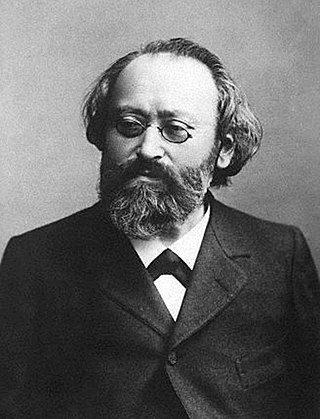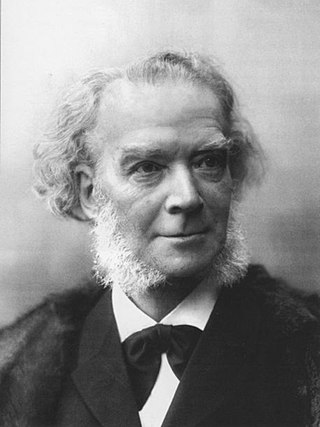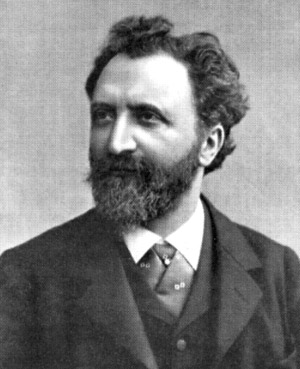
Max Bruch was a German Romantic composer, violinist, teacher, and conductor who wrote more than 200 works, including three violin concertos, the first of which has become a prominent staple of the standard violin repertoire.

Eugène-Auguste Ysaÿe was a Belgian virtuoso violinist, composer, and conductor. He was regarded as "The King of the Violin", or, as Nathan Milstein put it, the "tsar".

A violin concerto is a concerto for solo violin and instrumental ensemble. Such works have been written since the Baroque period, when the solo concerto form was first developed, up through the present day. Many major composers have contributed to the violin concerto repertoire, with the best known works including those by Bach, Bartók, Beethoven, Brahms, Bruch, Dvořák, Khachaturian, Mendelssohn, Mozart, Paganini, Prokofiev, Sarasate, Shostakovich, Sibelius, Tchaikovsky, and Vivaldi.

The Violin Concerto in D major, Op. 77, was composed by Johannes Brahms in 1878 and dedicated to his friend, the violinist Joseph Joachim. It is Brahms's only violin concerto, and, according to Joachim, one of the four great German violin concerti:
The Germans have four violin concertos. The greatest, most uncompromising is Beethoven's. The one by Brahms vies with it in seriousness. The richest, the most seductive, was written by Max Bruch. But the most inward, the heart's jewel, is Mendelssohn's.

Carl Heinrich Carsten Reinecke was a German composer, conductor, and pianist in the mid-Romantic era.

Friedrich Gernsheim was a German composer, conductor and pianist.

The Violin Concerto No. 3 in B minor, Op. 61, by Camille Saint-Saëns is a piece for violin and orchestra written in March 1880. Saint-Saëns dedicated the concerto to fellow composer-virtuoso Pablo de Sarasate, who performed the solo part at the premiere in October 1880 in Hamburg.
Violin Concerto No. 2 in D minor, Op. 22, by the Polish violin virtuoso, Henryk Wieniawski, may have been started in 1856, but the first performance did not take place until November 27, 1862, when he played it in St. Petersburg with Anton Rubinstein conducting. It was published in 1879, inscribed to his dear friend Pablo de Sarasate.

The Scottish Fantasy in E-flat major, Op. 46, is a composition for violin and orchestra by Max Bruch. Completed in 1880, it was dedicated to the virtuoso violinist Pablo de Sarasate.

Max Bruch's Violin Concerto No. 1 in G minor, Op. 26, is one of the most popular violin concertos in solo violin repertoire and, along with the Scottish Fantasy, the composer's most famous work. It has been recorded often.
Violin Concerto No. 2 in D Minor "in the Hungarian Manner", Op.11 is a Romantic violin concerto written by violinist Joseph Joachim (1831–1907). Rarely performed, it has been described as "the Holy Grail of Romantic violin concertos." by music critic David Hurwitz.

Max Bruch's Violin Concerto No. 3 in D minor, Op. 58, was composed in 1891 and dedicated to the violinist/composer Joseph Joachim, who had persuaded him to expand a single movement concert piece into a full violin concerto.
Max Bruch's Serenade in A minor, Op. 75 is a composition for violin and orchestra, which was composed in 1899.
The Concerto for Clarinet, Viola, and Orchestra in E minor, Op. 88, by Max Bruch was composed in 1911 for his son, Max Felix Bruch, and received its first performance in 1912, with Willy Hess (viola) and the composer's son Max Felix Bruch (clarinet) as the soloists. It consists of three movements:
- Andante con moto
- Allegro moderato
- Allegro molto

Rose Sutro and Ottilie Sutro were American sisters who were notable as one of the first recognised duo-piano teams. It has been claimed they were the first such team, but Willi and Louis Thern preceded them by almost 30 years. They were also noted confidence tricksters, repeatedly swindling the German composer Max Bruch by taking advantage of his trusting nature - first, by making and publishing unauthorized changes to his Concerto for Two Pianos and Orchestra in A-flat minor, and second, stealing and absconding with the autograph copy of his Violin Concerto No. 1 in G minor, later selling it in 1949.
The Concerto for Two Pianos and Orchestra, Op. 88a, was written by Max Bruch in 1912. It is in 4 movements, written in the rarely seen key of A-flat minor, and takes about 25 minutes to perform.
Max Bruch's Romance for Violin and Orchestra in A minor, Op. 42, was composed in 1874. Bruch had intended the piece to form the first movement of a projected second violin concerto. However the composer found himself unable to progress beyond the first movement and chose to publish the work as a standalone concert piece dedicated to violinist Robert Heckmann who along with Joseph Joachim had assisted Bruch with the violin part.
A concert piece is a musical composition, in most cases in one movement, intended for performance in a concert. Usually it is written for one or more virtuoso instrumental soloists and orchestral or piano accompaniment.

The String Octet in B♭ major, Op. posth., was composed by Max Bruch for four violins, two violas, cello and double bass. Completed in 1920, the year of his death, it is his last work and would not be published until 1996. The work is also known under the name Concerto for String Orchestra (Octet).
The Piano Quartet in B♭ major, Op. 41, also known as the Piano Quartet No. 2, was written by Camille Saint-Saëns in February 1875. Dedicated to Jules Foucault, it was premiered on 6 March 1875 in Paris. It has been called one of Saint-Saëns' neglected masterpieces and is in the core repertoire of the piano quartet.













